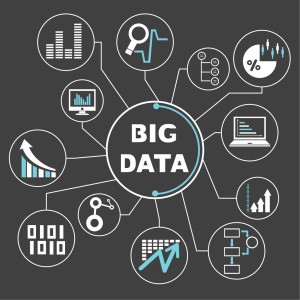The nexus of mobile, cloud, social and big data is radically reshaping the business world. Nowhere is the upheaval more dramatic than in areas with high customer engagement: retailing, financial and communications services, travel and customer service. Such profound changes in the landscape, driving heightened consumer expectations have pushed beyond the consumerization of technology to the consumerization of customer experience (“Creating the Omnichannel Customer Experience”, Kurt Marko).

The customer experience, according to a formal definition, is “the way customers perceive their interactions with the company" (Outside In. H. Manning, K. Bodyne. 2012, Forrester Research). It is a concept that has a cross-channel value: a positive customer experience comes not only from the pleasantness of the single interaction but, above all, the ease with which customers can switch from one channel to the other and feel part of a single entity experimenting a "seam-less" experience.
In this context, the quality of the single channel is no longer sufficient to ensure a competitive advantage. The new frontier to differentiate become the ability of the product or service to make the consumer live an overall experience that is unique and unrepeatable, superior to industry-standard reference.
However, how does it become possible to investigate the customer experience with an omni-channel view? How it is possible to associate with it quantitative measures and provide insight that can transport changes in service models that improve the overall quality of interactions and generate a solid competitive advantage?
To meet this challenge we need the interaction of three basic elements:
- Big Data
 The advent of inexpensive storage and sophisticated data analytics paired with predictive algorithms can turn vast quantities of previously unusable data into useful, actionable information. Big data represents the information assets that come from customer-company interactions. Such information contains the journey of customers by which you can reconstruct the history and experiences of each of them.
The advent of inexpensive storage and sophisticated data analytics paired with predictive algorithms can turn vast quantities of previously unusable data into useful, actionable information. Big data represents the information assets that come from customer-company interactions. Such information contains the journey of customers by which you can reconstruct the history and experiences of each of them.
- Technology
 It is important to take the most of the information assets of big data and make processes of analysis related to the customer experience easy, effective and efficient. These processes allow a 360-degree view of customers while providing the qualitative and quantitative measures of customer perception regarding lived experiences. The use of analytics, fell in this context, also enables companies to offer customers services and solutions calibrated on their behavior and preferences of interaction.
It is important to take the most of the information assets of big data and make processes of analysis related to the customer experience easy, effective and efficient. These processes allow a 360-degree view of customers while providing the qualitative and quantitative measures of customer perception regarding lived experiences. The use of analytics, fell in this context, also enables companies to offer customers services and solutions calibrated on their behavior and preferences of interaction.
- Methodological Approach
 Preparing solutions aimed at the analysis of the customer experience requires a structured approach that allows putting the customer at the center of his considerations. This makes him an active element in the co-creation of value during the interactions with the different business touchpoints.
Preparing solutions aimed at the analysis of the customer experience requires a structured approach that allows putting the customer at the center of his considerations. This makes him an active element in the co-creation of value during the interactions with the different business touchpoints.
Companies operating in contexts within which the customer experience becomes crucial, must necessarily adopt tools and analytical processes that take into account the above elements. Only in this way you can have a 360-degree view of customers and provide differentiating solutions to the market.
A large telco operator, to meet this challenge, chose SAS as a partner in the development of a new analytical platform that allowed to:
- Make analytical processes of the customer efficient by providing a unique environment in which data from different systems are integrated.
- Automate the production of different qualitative and quantitative KPIs, calculated on different channels, through the implementation of visual and interactive monitoring systems.
- Analyze and visualize the customer journey through user-friendly interfaces that allow you to identify the most important path between those possible, at different levels of granularity.
- Quickly monitor the customer satisfaction based on the followed path.
- Acquire information with high benefit to make improvements in the quality of the interaction with the different channels.
- Structure pro-active actions in resolving customer issues.
- Use analytics to structure next best actions that can meet the specific needs of each customer and strengthen churn prevention systems.
This successful project involved several areas of the company. It has been realized thanks to the expertise of the different actors, internal and external, that have successfully cooperated to provide the company with analytical systems capable of providing high-value information.
So it is a fact that delivering exceptional customer experiences has become a key differentiator for top organizations today. To gain insights on the customer journey is key.
See how you can visualize and map in an easy way the Customer Journey through an end-to-end process that starts with the identification of needs, up to the definition of an effective & personalized marketing strategy for each customer – find the webinars here.

